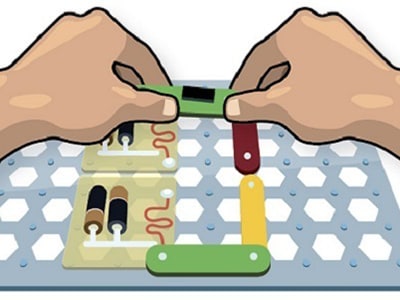Building on the concept of communities of practice, Etienne Wenger (2009) has proposed a social theory of learning. The focus of this theory is “learning as social participation,” in which learners actively participate in the practices of social communities and construct personal identities in relation to these communities.
As instructional designers, we’re aware of various theories about how and why people learn. And, of course, we’ve heard about social learning. As mobile technology advances, learning has moved from the classroom and the desktop computer, to the world. And just as technology has advanced, learning theory has advanced.
So, where are we going with learning theory in the 21st century? Here are some possibilities.
Connectivism and Social Learning
George Siemens (2005) has proposed a learning theory called connectivism. This theory extends learning to include knowledge gained by means of informal networks among people and from digital information available online. Learning is a process of connecting nodes or information sources and may reside in machines as well as human beings.
Among the theory’s more controversial claims is the assumption that technology “is altering (rewiring) our brains. The tools we use define and shape our thinking.” While this statement might be simply a metaphor, it seems to imply an as yet untested organic change in the brain. It’s a fascinating idea, but the claims of connectivism must be subjected to empirical research.
Still, the ideas of connectivism can lead us to imagine new ways not only of learning but of assessment. Learning in 2015 isn’t just an individual activity. It’s social too. How can we incorporate the social element into not only our learning activities but also in the ways in which we measure learner mastery of learning objectives?
Here’s one idea. Louise Starkey (2011) has proposed a “digital learning matrix” that captures the activities required for learning with digital technologies. In this model, learning is measured not just in terms of individual achievement but also by examining the ways in which learners connect with others to collaborate and share the creation of knowledge.
Web 3.0 and Social Learning
The “Web 2.0” buzzword has been floating around for several years. As described by Bryan Alexander (2006), Web 2.0 social networking technologies make use of small pieces of text (or “microcontent”) that are user-created (often in collaboration with other users) and can be repurposed in a variety of ways.
But a new buzzword is just around the corner: Web 3.0. What’s that all about?
Jason Ohler (2008) notes that the collaborative nature of social networking technologies has been extended to allow more meaningful uses of information. In “Web 3.0,” microcontent is tagged (that is, marked with metadata that describes the nature of the information). Tagging allows precise searching for information. As Ohler puts it, we are moving toward a “semantic Web” in which search engines are able to present information in ways that are more meaningful.
Just as connectivism suggests that learning might also include knowledge gained from online sources, Ohler states that we each have our own “personal learning network (PLN)” in which we find information to meet our own learning goals. With Web 3.0, he suggests, we will be able to create technological agents that find information and present it to us automatically and in more meaningful ways.
As an example of this idea, he envisions the possibility of a search engine delivering information on a particular topic that is not a list of results but rather a multimedia presentation from a variety of sources. How cool would that be?
References
Alexander, B. (2006). Web 2.0: A new wave of innovation for teaching and learning? Educause Review, 41(2), 33-44.
Ohler, J. (2008). The semantic web in education. Educause Quarterly, 31(4), 7-9.
Siemens, G. (2005). Connectivism: A learning theory for the digital age.International Journal of Instructional Technology & Distance Learning, 2(1). Retrieved March 4, 2015, from http://www.itdl.org/Journal/Jan_05/article01.htm.
Starkey, L. (2011). Evaluating learning in the 21st century: A digital age learning matrix. Technology, Pedagogy and Education, 20(1), 19-39.
Wenger, E. (2009). A social theory of learning. In K. Illeris (Ed.), Contemporary Theories of Learning: Learning Theorists—In Their Own Words (pp. 209-218). New York: Routledge.







